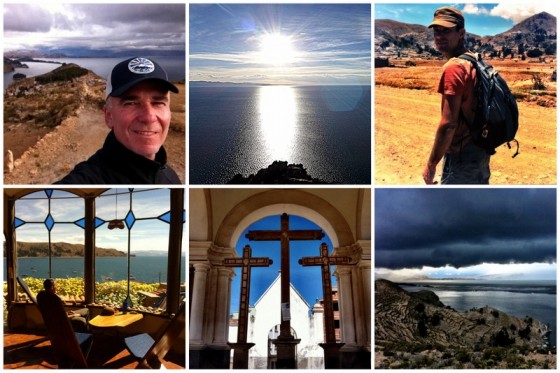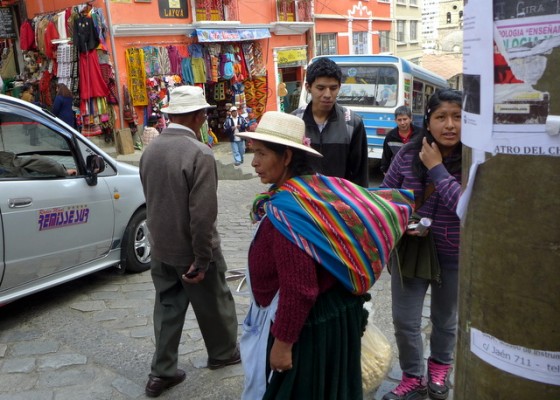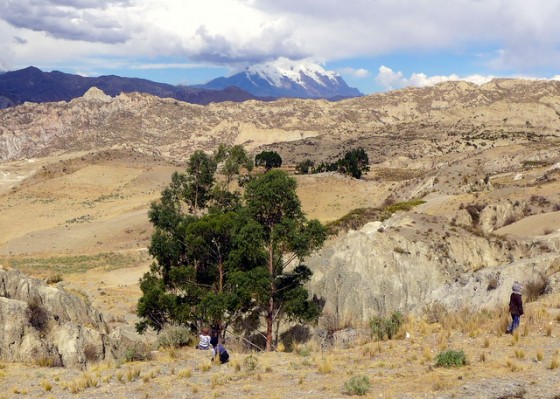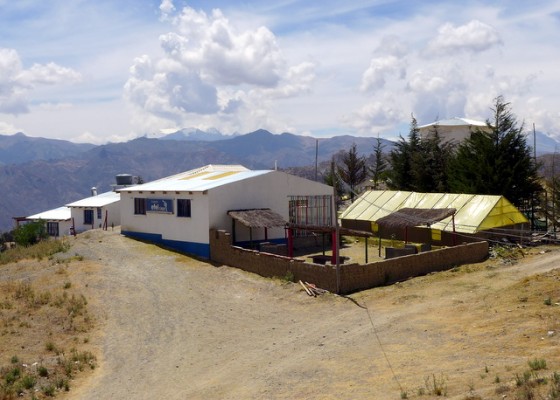
After a chokingly long week in congested La Paz, Paul arrived and at our first chance we were off in search of cleaner air, a less-harried town, and some water in land-locked Bolivia. I had finished my first week with Kiva, happily making friends at the Emprender loan offices and completing a couple borrower visits. It was time to celebrate my recent success with Paul!
So off we went to Copacabana on the shores of the magisterial Lago Titicaca. Standing at 3,812 m (12,507 ft), the lake is the highest navigable body of water in the world. The Copacabana region, or kota kawana in Aymara (which means “view of the lake”), was considered by both the Tiwanaku and Incan empires strategically, economically and spiritually important. Consequently Copacabana was settled long before the Spanish arrived.
Today it is a quaint town of 6,000 residents and a tourist hub for both backpackers and Andinos alike. The Basilica of Our Lady of Copacabana, a hallowed shrine dating back to the 16th century, is home to the patron saint of Bolivia. This so-called “Dark Virgin” purportedly has magical healing powers. Her reputation is so great that pilgrims flock to the cathedral all year long. Revered far and wide, the Virgin even inspired the naming of a now-famous beach in Rio de Janeiro.
Paul and I instantly bonded with Copacabana. Laid-back, friendly and geographically and culturally interesting, we both relaxed within minutes of getting off the bus from La Paz. On the ride there, I couldn’t remember if I passed through this town back in 1999 when I made my first Andean circuit with my brother Erik. At the time, I recall, I was quite ill from the flu and my recollection was fuzzy at best. But as soon as I saw the distinctive Basilica, fashioned in the mudéjar style of Islamic Spain, I instantly remembered being here.
One tidbit I do remember from my first visit was changing $100 USD at a local bank since Copacabana was my first stop in Bolivia, having just arrived from Peru. There were no ATM’s in the town then and the bank teller patiently counted out a pile of small-denomination Boliviano notes. I made my way back to my hotel with a stack of bills as thick as a brick, what a feeling!
The first afternoon Paul and I just wandered idly around town, poking about the markets, climbing the Cerro Calvario which has great views of the town and the lake. We enjoyed a cold beer as the sun sank on the western shores of Lake Titicaca and delivered an almighty sunset. The vote was unanimous — Lake Titicaca was a perfect place to be for a few days.
Continue reading “Lake Titicaca: At the Copa… Copacabana!”













